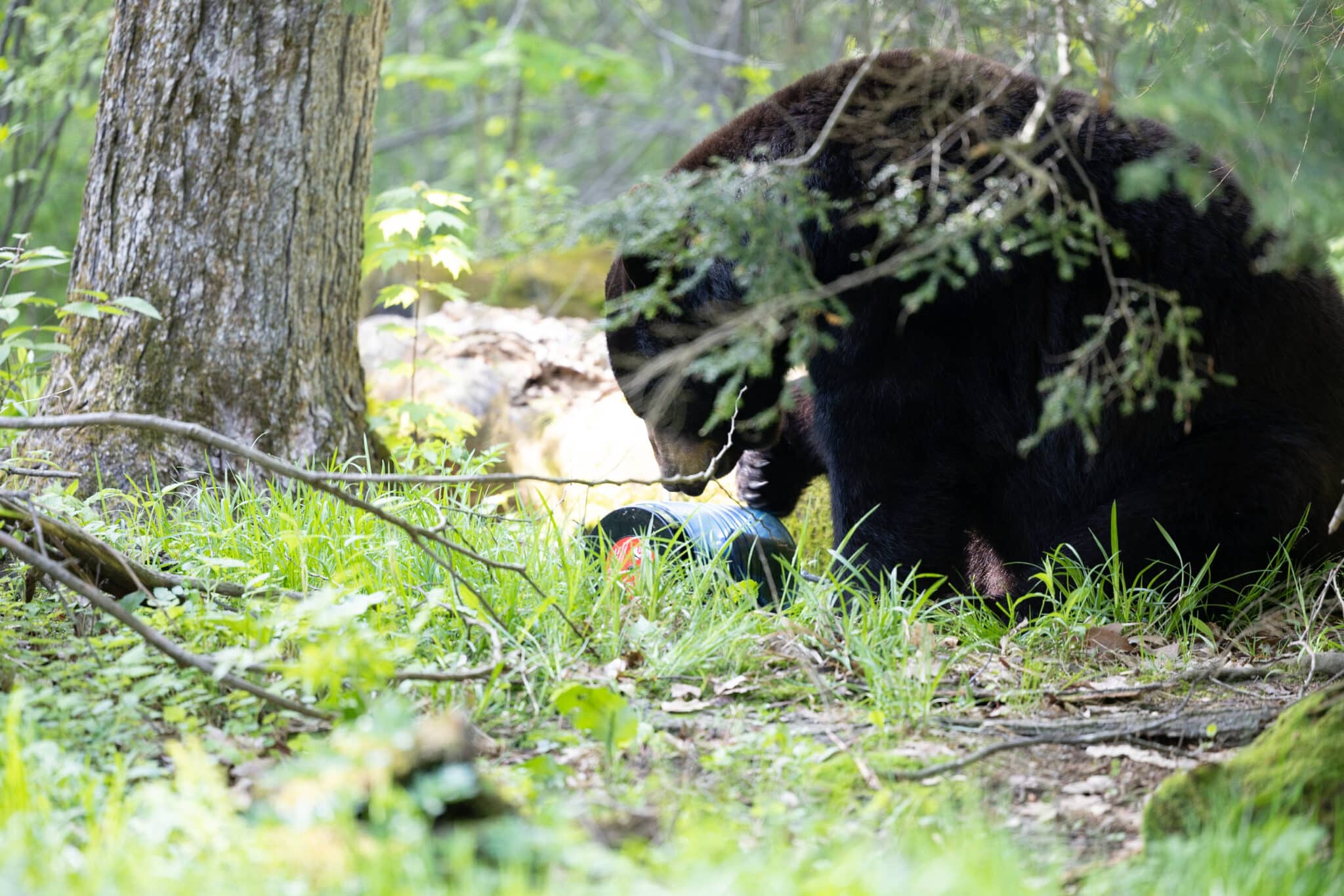How to Keep Bears Away from Your Campsite: 3 Tips to Protect Yourself in the Backcountry
Knowing how to keep bears away from campsites can mean the difference between enjoying your adventure and chalking it up as a complete disaster. Just imagine it.
You’ve found the perfect spot in a stand of aspen. Tension melts from your shoulders as your pack slips to the ground. Tent up. Bedroll smoothed. You step back and smile with satisfaction. A good night’s sleep is definitely headed your way!
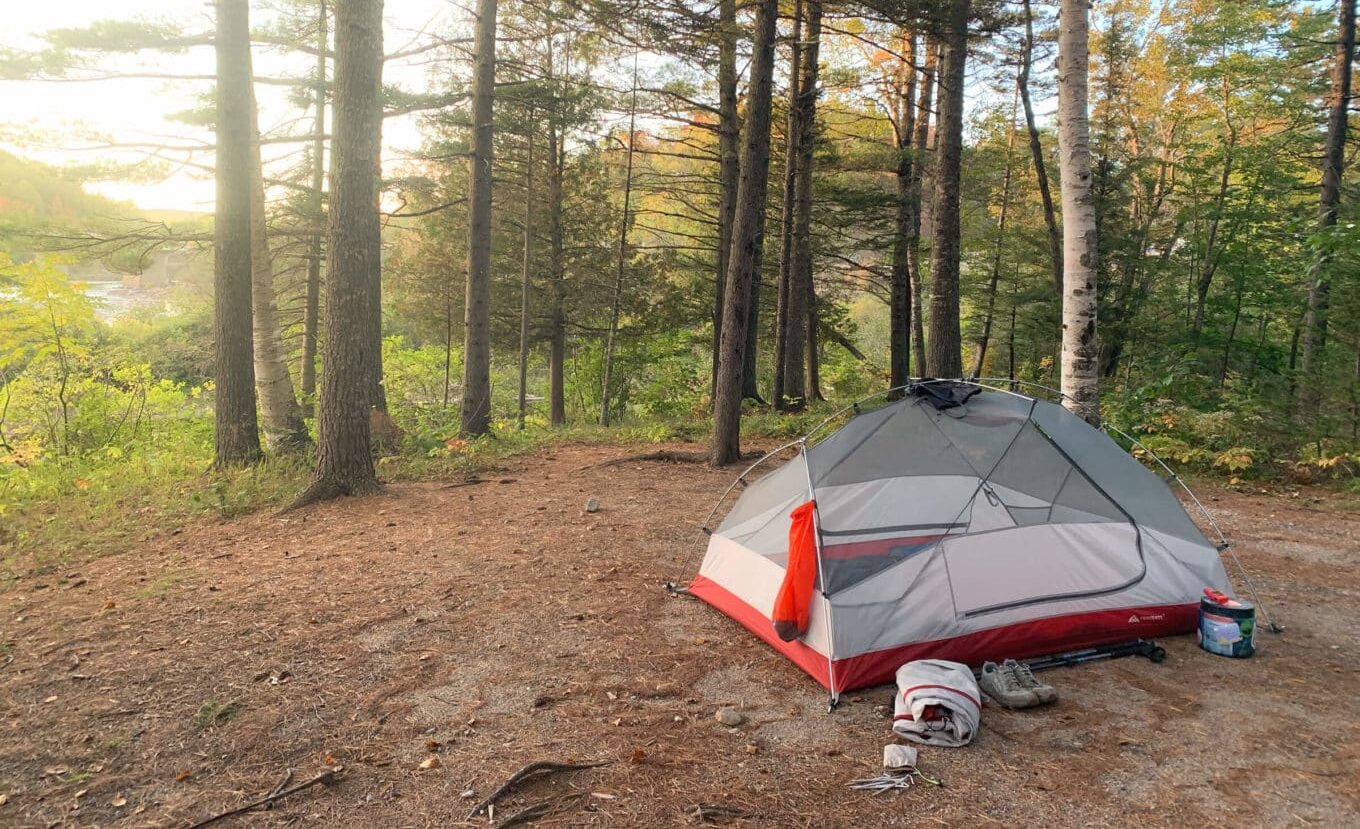
Ahh… the perfect campsite.
The gurgling creek down the hillside calls your name. Moments later the boots are off, socks are airing, and crystal clear water is rushing over dirty toes. This is pure bliss. The sound of water rushing over smooth stones fills the air around you. It can’t last forever though, and eventually you’re trudging back uphill. And as you come close to camp, you realize you’ve had a visitor.
Your pack is ripped open and its contents scattered across the ground. Empty wrappers flutter in the breeze. Crumbs in the grass laugh at your growing hunger. Even the tent looks sad, with its broken pole and droopy entrance.
This isn’t the adventure you had in mind.
Thankfully, there are things you can do to minimize the chances of THIS being your next backcountry experience! Before we jump into those tips, let’s discuss ‘WHY’ a bear would enter your campsite. Then we’ll discuss 3 simple steps you can take to protect yourself and your stash so you can enjoy crystal clear creeks AND a peaceful night’s sleep!
Why Bears Visit Campsites
Even though trying to attribute intent to an animal is always going to be something of a guessing game, there are lots of good studies done to decipher animal behavior. Organizations like Bear Smart and BearWise have contributed greatly to our understanding of how we can live harmoniously with bears. From studying human-bear conflicts to following trends in human compliance with recommended safety practices, researchers are getting a clearer picture of what makes bears tick.
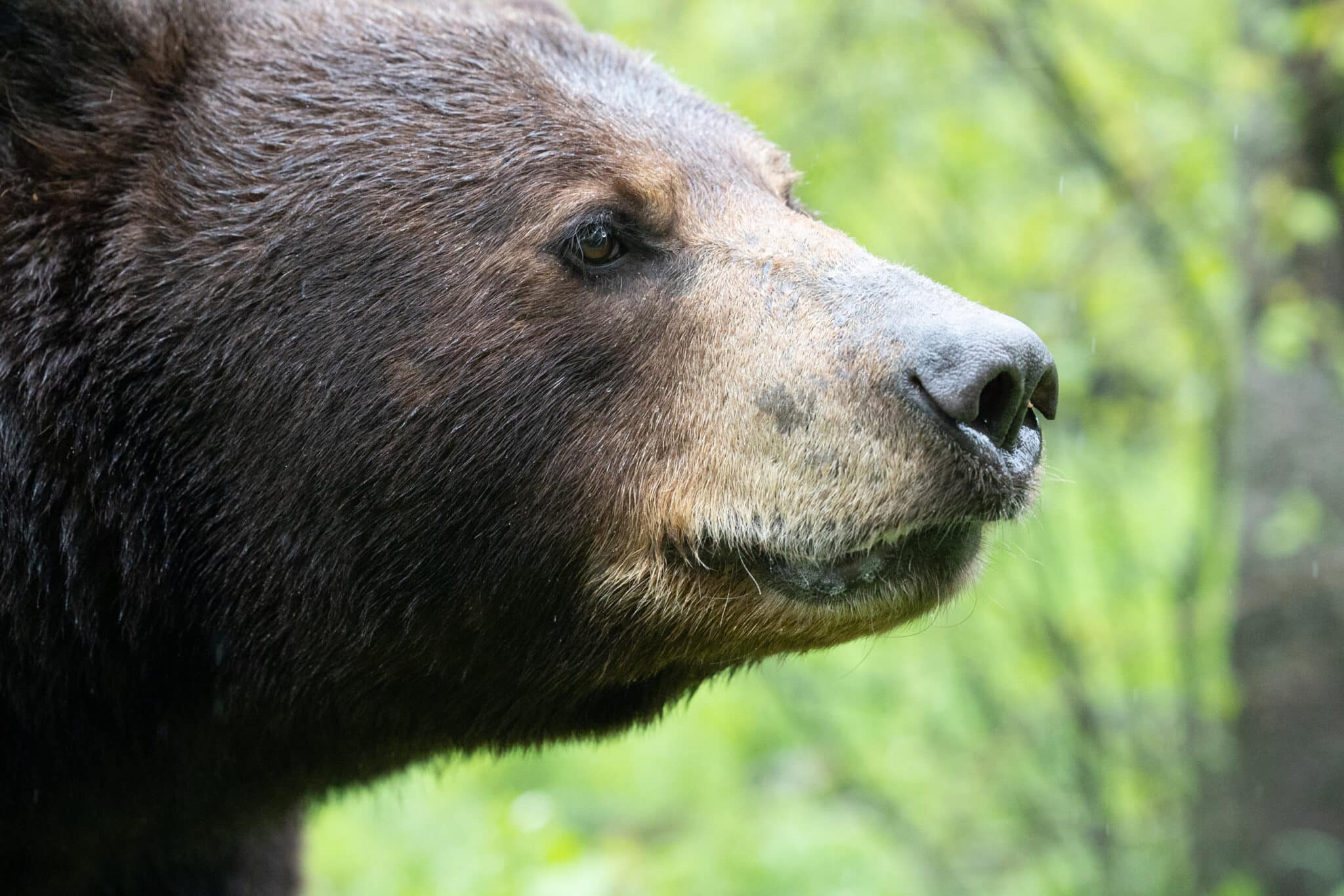
Look at that powerful nose!
What we’ve found is that there are 3 main reasons you might get a bear in your campsite.
- Attractants
- Location
- Curiosity
Understanding each of these gives you a baseline to strategize prevention. Since bears have exhibited behavior indicating they’re curious by nature, it makes sense that your presence would be interesting to them. They’re also creatures of habit, so it makes sense that YOU might actually be the visitor crashing their pad. And they have powerful noses, so of COURSE they’re going to want in on that campfire dinner!
That leads us to the first of our tips on how to keep bears away from your campsite.
#1 – Practice Proper Food Storage
More often than not, bears visit campsites for high-calorie human food. They smell something incredible and, for whatever reason, the bear is unbothered by humans. Maybe the bear has done it before and gotten away with it or maybe they’re a first time offender. Either way, it’s of the utmost importance that they never get away with human food ever again.
Why is that important?
Because any reward received for visiting camps and approaching humans is setting bears up for a premature exit from this world. When a bear figures out it can get easy, free food in certain spots and in certain ways it starts making it a habit to repeat the behavior.
Proactive wildlife management policies, like the one cited in the 2020 report from the Interagency Grizzly Bear Study Team, stipulates a single strike approach for what’s called “offensive aggression”. This kind of behavior is described as “behav[ing] aggressively toward people, injur[ing] people, or damag[ing] property in their attempts to gain access to human foods”. Once a bear gets a strike, it becomes a target for elimination.
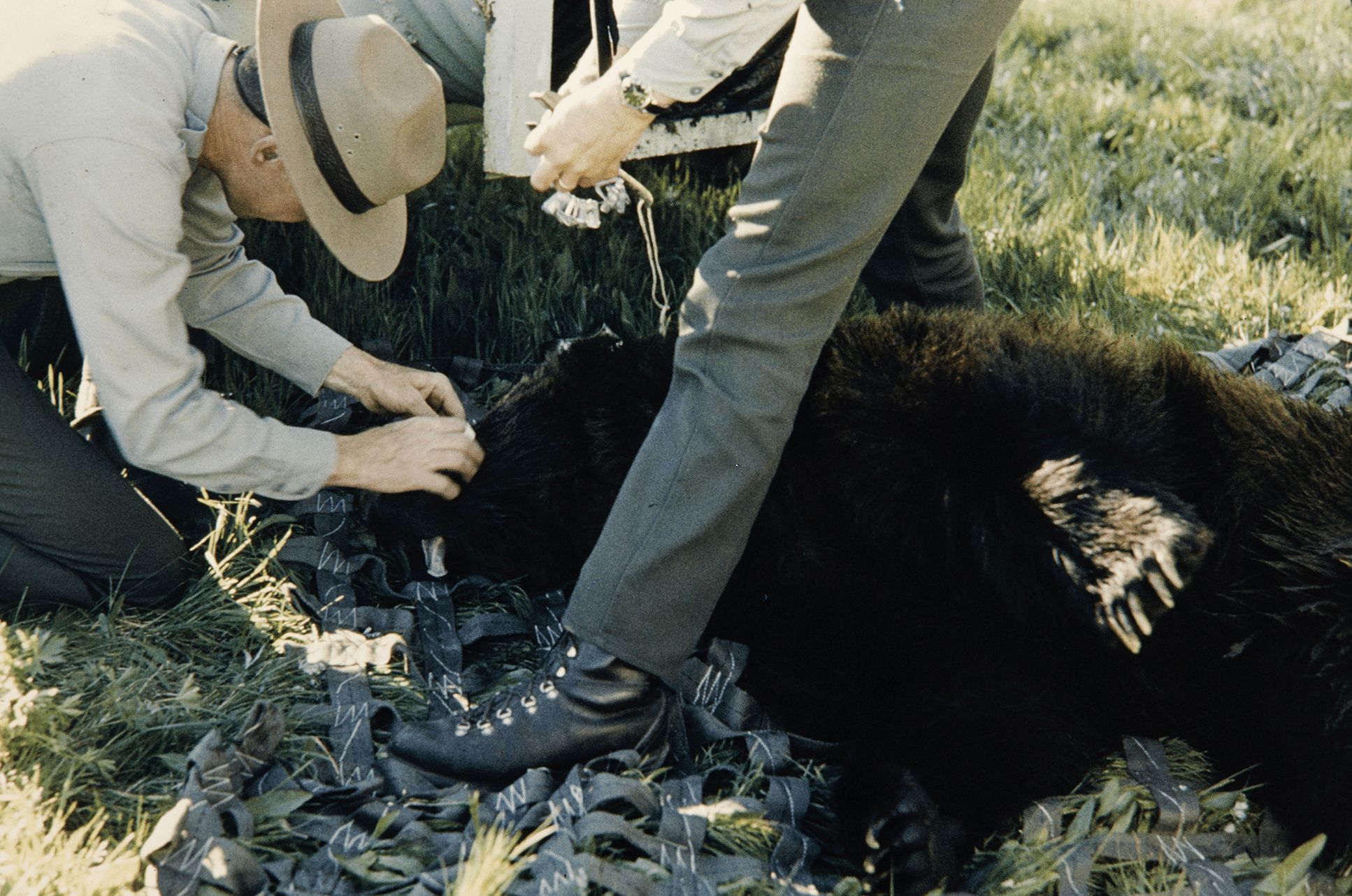
That aggression could be a learned behavior. Receiving easy calories from human sources encourages them to seek it out again. And if it’s not easy again, well… They get hangry!
So here are 3 steps to keeping your food store properly:
1. Use a bear proof canister
Unlike many bear bags, canisters like the BV425-Sprint are actually bear PROOF. They’re put through rigorous tests and have to prove themselves before going to market. Check out this video of a black bear doing his best to get the goods in a BearVault. He gets an ‘A’ for effort, but he lost interest in the end. No reward for him!
2. Keep your stash 70 steps from your tent
Never store your canister where you sleep. It’s bear proof – not smell proof! By putting it far away from your bedroll you’ll help make sure any avid sniffers aren’t drawn right to you. They can spend all night trying to earn some calories while you catch your z’s undisturbed.
3. Include all aromatics in your storage plan
Of course you don’t eat your deodorant. Or your toothpaste. But it’s still an interesting smell and needs to be treated like an attractant. Just toss it on top of tomorrow’s meals when it’s time to bed down so you can grab it first thing in the morning. You really don’t need them to sleep.
Choose Your Campsite Wisely
If you choose a spot that bears like to frequent you can pretty much expect to have one drop by. Knowing what to look for in the way of signs and general habitat can help you avoid it. Here’s a list of things to watch for.
Definitely DON’T pitch your tent near…
- Good foraging spots (berry patches, trout streams, carcasses)
- Lots of hair on underbrush or tree bark
- An abundance of claw marks on trees
- Obvious game trails
- Fresh prints
- Fresh scat
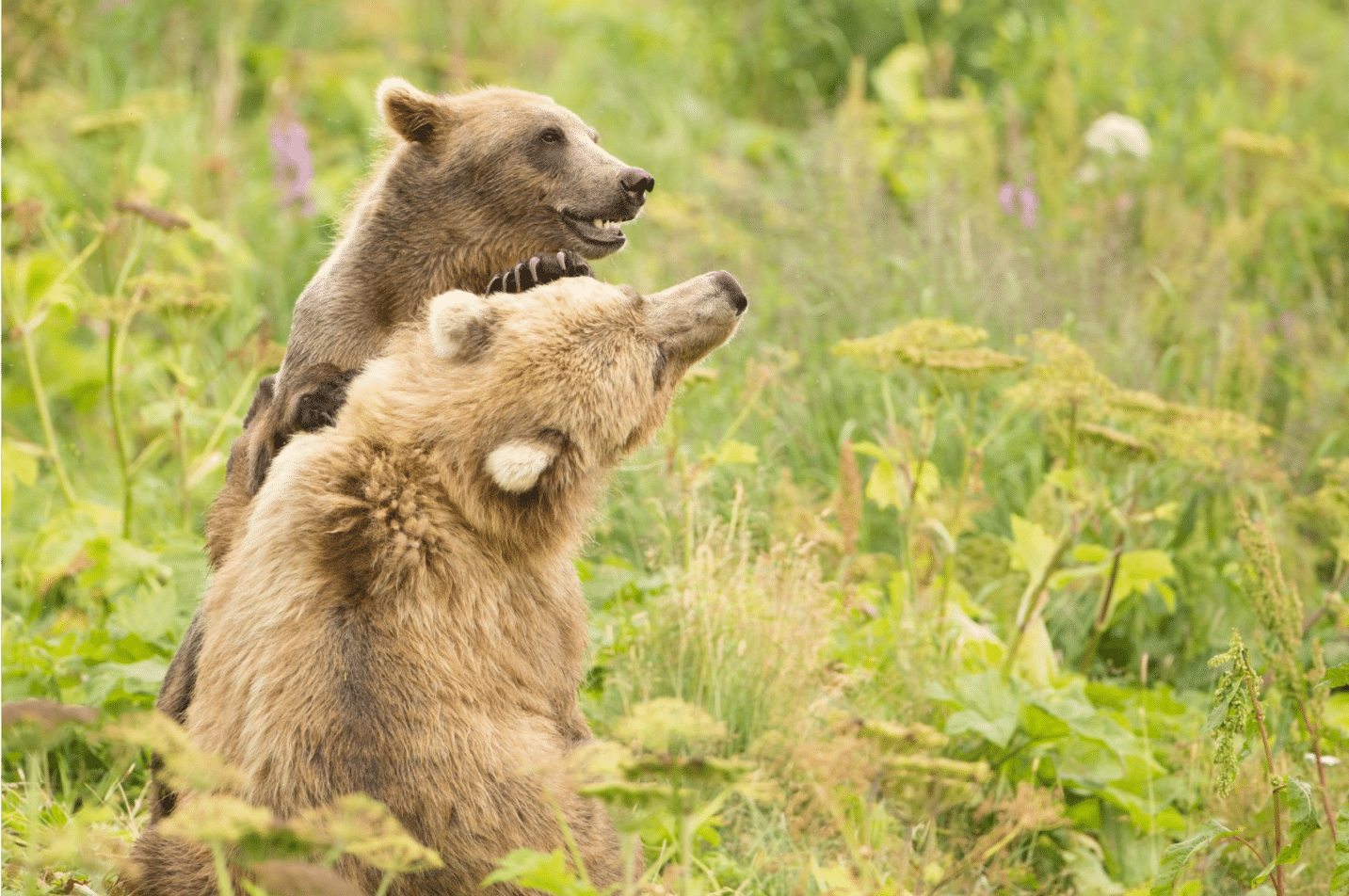
Kodiak brown bear cubs wrestle in a meadow
Avoiding those likely hot spots will minimize the chance that you’re trespassing directly onto a bear’s established territory. You can also prioritize things like good visibility to help ensure you’ll at least be able to see any approaching wildlife from a greater distance. Consider your proximity to other campers as well and make sure you have a way to communicate in case of emergency.
Choosing wisely when it comes to your campsite can mean having a bear-free trip altogether.
#3 – Have Repellent Options On Hand
Whenever you go exploring in bear country, whether that’s on a day hike or for an extended backcountry campout, you must have protection options in your supply list. There’s simply no good reason to leave them behind, especially when you consider how curious bears can be when it comes to your strange camp gear.
There are 3 main things that can be used to keep bears out of your camp.
1. Noise
You can sing as you cook and set up camp or bring a speaker to broadcast your presence. Obviously, many people treasure the silence of the backcountry. Being respectful is important! It’s also important to ensure bears know you’re human so they can keep their distance, so weigh those options accordingly.
Wear your canister in a holster or clipped to a belt loop so it’s always handy. If a bear decides to enter your campsite while you’re there, stand your ground and deploy your spray if it refuses to respect your space. This is your territory now. He is not welcome.

3. Bear Fence
Consider a portable electric fence if you’re entering grizzly territory. These fences are used often by guide companies to protect their pack strings on long trips. They’re definitely a commitment for backpackers. Some weigh over 3.5 pounds. But if you’re really wanting to sleep easy there’s no better way to achieve that than to erect an impenetrable perimeter.
But the simple fact that it made the switch during a search for an easy meal makes proper food storage seem that much more important.
Keeping Bears Out of Your Campsite Benefits Everyone
It might sound like this has all been about YOU and YOUR enjoyment of nature. But keeping bears out of your campsite and away from your things is actually something that’s important for maintaining a harmonious balance in the world.
Author Profile

Jessica Cockroft
Jess merges her passion for words and an insatiable longing for adventure as an outdoor freelance content writer and marketer. When she’s not busy stringing words together you’ll probably find her planning another camping trip for her crew of kids or taking care of the homestead. You can find her on LinkedIn and Instagram, as well as on her own website.

